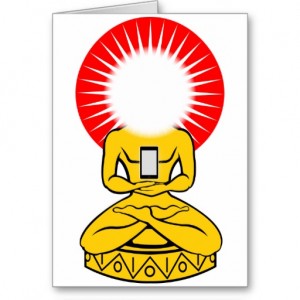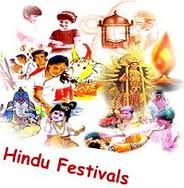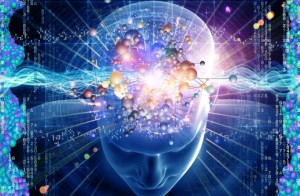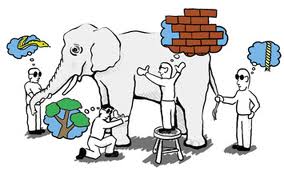Dr. V.K.Maheshwari, M.A. (Socio, Phil) B.Sc. M. Ed, Ph.D.
Former Principal, K.L.D.A.V.(P.G) College, Roorkee, India
Mrs Sudha Rani Maheshwari, M.Sc (Zoology), B.Ed.
Former Principal, A.K.P.I.College, Roorkee, India
God is, even though the whole world deny him. Truth stands, even if there be no public support. It is self-sustained.
Mahatma Gandhi
Theology, of course, is the study of gods — does a god exist, what a god is, what a god wants, etc. Every religion has its own theology because of its study of gods, if it includes any gods, it will proceed from specific doctrines and traditions which vary from one religion to the next.
There is rather wide range of attempted answers to the problem of God. Starting at one end of the gamut and proceeding to the other, they may be suggested
Atheism-
Atheism is a positive denial, denial of metaphysical beliefs in God or divine beingsl. There is no ultimate reality in or behind the cosmos which is Person or Spirit. It is rooted in an array of philosophical systems. Since atheists don’t accept the existence of any gods, they don’t accept that theology is the study of anything real.
Deism-
A movement or system of thought advocating natural religion, emphasizing morality, and denying the interference of the Creator with the laws of the universe.
Accordingly God exists quite apart from, and is disinterested in, the physical universe and human beings. But He created both and is the Author of all natural and moral law. belief in the existence of a supreme being, specifically of a creator who does not intervene in the universe. The term is used chiefly of an intellectual movement of the 17th and 18th centuries that accepted the existence of a creator on the basis of reason but rejected belief in a supernatural deity who interacts with humankind.
Pantheism-
A doctrine that equates God with the forces and laws of the universe. All is God and God is all. The cosmos and God are identical. The conception of God as emerging, for which there is no common name. God is evolving with the cosmos; He is the end toward which it is moving, instead of the beginning from which it came. A doctrine that identifies God with the universe, or regards the universe as amanifestation of God.Worship that admits or tolerates all gods. The worship of all gods of different creeds, cults, or peoples indifferently; toleration of worship of all gods.
Polytheism-
Spiritual reality is plural rather than a unity. Thee is more than one God. the belief in or worship of more than one god. Belief in many gods. Though Judaism, Christianity, and Islam are monotheistic , most other religions throughout history have been polytheistic. The numerous gods may be dominated by a supreme god or by a small group of powerful gods. The gods originated as abstractions of the forces of nature such as the sky or the sea and of human and social functions such as love, war, marriage, or the arts. In many religions the sky god is powerful and all-knowing , and the earth goddess is maternal and associated with fertility. Gods of death and the underworld are also important. In addition to many gods, polytheistic religions generally also include malevolent or benevolent spiritual forces or powers.
Theism-
Belief in the existence of a God or gods; belief in the existence of one God viewed as the creative source of the human race and the world who transcends yet is immanent in the world. Ultimate reality is a personal God who is more than the cosmos but within whom and through the cosmos exists. Belief in the existence of a god or gods, esp. belief in one god as creator of the universe, intervening in it and sustaining a personal relation to his creatures.
Theism view that all observable phenomena are dependent on but distinct from one supreme being. The view usually entails the idea that God is beyond human comprehension, perfect and self-sustained, but also peculiarly involved in the world and its events. Theists seek support for their view in rational argument and appeals to experience. A central issue for theism is reconciling God, usually understood as omnipotent and perfect, with the existence of evil.
Theoretical Rationale of Concept of God :
The most crucial queries of philosophy are questions as to the existence and nature of God. Of course it is radically decisive to believe or not to believe in God. It is important however to understand something of the nature of the reality or object we signify when we use the word God as well as to believe concerning His existence.
Concept of God in Idealism
Idealism as a philosophy presents an ontological framework compatible with religion. Wherever order is externally imposed, wherever there is an Ideal, it is a simple step to bring in God an intermediary or intermediary class between God or the Ideal and man. The intermediary class (whether prophet, teacher, or priest) is composed of those better able to understand or communicate with the Ideal. These intermediaries, in some societies, soon become a privileged class.
Plato holds the assumption that the spirit of man is eternal. Whatever he knows is already contained within his spirit. Existence depends upon mind. Every stimulus received by the mind is derived ultimately from God. God is the Infinite Spirit.
Absolute is viewed as the final and most ethical of all things and persons, or as God, who is by definition perfect and it thus perfect in morals the idealist’s epitome of ethical conduct Idealists generally root all values either in a personal God or in a personal spiritual force of nature. They all agree that values are eternal. Theistic Idealists assert that eternal values exist in God. Good and evil, beauty and ugliness are known to the extent that the idea of good and the idea of beauty are consistent with the absolute good and the absolute beauty found in God. Pantheistic Idealists identify God with nature. Values are absolute and unchanging because they are a part of the determined order of nature and morality will lie in the imitation of Absolute Self.
Concept of God in Naturalism
Many naturalists do not use the term God , but surprisingly there are Naturalists who talk about God ,and although they do not advance classical arguments for His existence they go on to give some definition of His nature.
According toWiesman, the renowned Naturalist God is within Nature .He is not all nature nor more than nature .He is that particular structure of nature in nature which is sufficiently limited to be described as making possible the realization of value and as the foundation of all values
God is that process within Nature which is a kind of open door to all who would grow in richness of life and at the same time God is the stable ground in Nature which sustains and constitute the values by which life is enriched ,Because of this, God, the structure of value itself, is the greatest of all values, the most worthy in human experience to which man must adjust if he is to grow in the possession and enjoyment of value.
Concept of God in Pragmatism
Naturalism reduces everything to life or matter, Idealism to mind or self.
Pragmatics sees no necessity of limiting herself to one or two fundamental principles of explanation, she is quite content to admit several principles of explanation and accordingly pluralistic. In brief Pragmatism is a mid way in between the extreme form of naturalism and absolute idealism. That is why many philosophers even do not consider it as a philosophy , they treat it as a process or method or attitude.
There are two major points which must be made about the ontological bases of pragmatism. First, the traditional distinction between mind and matter as two separate and independent substances is rejected by the pragmatists, and second, the pragmatists use, as their ontological base line, the concept of experience.
In short, she widens the field of search for God. Rationalism sticks to logic and the empyrean. Empiricism sticks to the external senses. Pragmatism is willing to take anything, to follow either logic or the senses and to count the humblest and most personal experiences if they have practical consequences. She will take a God who lives in the very dirt of private fact – if that should seem a likely place to find him.
For the pragmatist, most questioning about the nature of the metaphysical universe is simply idle speculation since we have no basis for any doctrine of absolute reality beyond our own observations. If, as pragmatists, we wish to know the nature of reality we should, rather than building ontological sandcastles, immerse ourselves in the thick of life, experiencing as much of it as we can. For the pragmatist, any absolute reality is simply our experiential world.
The pragmatic ontology differ in two major respect form that of the realist. The realist says is a world which we can know because of our experience while the pragmatist says that all we can know is our experience. Second, the pragmatic ontology differs from that of the realist in its insistence that “law” is descriptive rather than prescriptive, that “law” do not place demands upon nature and are not intrinsic to nature but are, rather, devices to explain continuities that man has experienced.
Finally, and most important, the pragmatist does not view reality as an abstract “thing”. Rather, it is a process of transaction which involves both doing and undergoing, the two characteristics of experience. For experience is a two way street: first is the doing and second is the process of deriving meaning from the act and its results. Experience demands both dimensions, for the second cannot exist without the first. And the first has no meaning without the second. Without exploration of the meaning and consequences of activity, man would indeed be on what the late radio comedian Fred Allen referred to as a “treadmill to oblivion.
Concept of God in Realism
The realist may be a monist, believing in one substance; a dualist, believing in two; or a pluralist, believing in many. Whichever he is, he believes that all substances have a real existential status independent of the observer. He sees the world as having an orderly nature and composition which exists independent of consciousness but which man may know.
Of the several, different answers to the problem of GOD, it is likely that everyone is upheld by some member of the family of realists. Of course, there are realists who are atheistic. Those who define mind in terms of matter or physical process, and who think of the cosmos in the thoroughly naturalistic sense,ofcourse have no place for God in there metaphysics.
Concept of God in Existentialism
Frederic Nietzsche’s statement, “God is dead,” succinctly expresses the atheistic existentialist’s view on the issue of the existence of a supernatural realm. Nietzsche says: Where is God gone? I mean to tell you! We have killed him – you and I! Do we not here the noise of the grave – diggers who are burying God? God is dead! God remains dead! And we have killed! …. The holiest and the mightiest that the world has hitherto possessed had bled to death under our knife – …. What are our churches now, if they are not the tombs and monuments of God?
Assume that God exists and is all-powerful & all-knowing & all-good. Then also assume that evil exists in the world. Then God is either responsible for the existence of evil, in which case God is Himself evil & not all-good; or else God is not responsible for the existence of evil & yet knew that it was going to happen & couldn’t prevent it–so God is not all-powerful; or else God would have prevented evil but didn’t know it was going to happen, and is therefore not all-knowing. So given evil, God is either not all-good, not all-powerful, not all-knowing, or does not exist.
Concept of God in Humanism
The existence of God was a standard topic for rational debate.. The atheists put forward excellent rejoinders, like the following: “If the universe requires a maker because it undergoes change, even God needs a maker because he sometimes creates, sometimes destroys.” ” They did not believe in the theory of divine creation of the universe by a supernatural power. Accepting only perception as the valid source of knowledge, the Humanism disapproved the reality of God. No one has ever seen God and no one can see him in future. There is no heaven, no hell, no God, and there are no objective ethical laws. The only laws binding men are the laws of the state, obedience to which brings rewards and disobedience of which fetches punishment. And the science of the laws of state is the only science worth studying Humanists believed only in the present existing world. They did not believe in the theory of divine creation of the universe by a supernatural power.
Concept of God in Perennialism
The perennialist believes that all things are composed of from and matter which make up their essences. But in order for things to Be in the world they must have Existence. Essence is the principle of potentiality while Existence is the principal actuality. For the perennialist, Existence is of a higher order than essence. It stands in the Aristotelian ontology. At the top of the hierarchy is Pure Existence or Being. The essence of Being is Existence. For the ecclesiastical perennialist this Being is equated with God. God cannot be know except through faith and revelation Father William McGucken has summed up the Catholic Church’s position nicely when he writes :God is pure actuality
The ontology of the perennialists is a two-sided coin. On the side is the natural world, open to reason. While on other is the supernatural realm open only through intuition, revelation, and fait. Science deals with the first side of the coin, but the spiritual side of the coin is beyond its reach.
The perennialist ontology is teleological, holding that man and of universe are moving toward a prescribed end. This end is realization of the principle of actuality or Absolute Being. The perennialist teleology can be known through faith, dogma, intuition, and revelation. The lay perennialist would find all of the foregoing acceptable. He would not reject the Aristotelian concept of realty. He would agree that the universe has a logic, and he would even accept the concept of Pure Being, as long as it was not given a special religious status or theological stature. The lay perennialist sees not need for equating Being with God, and thus making it something to be feared and worshiped.
Concept of God in Marxism
“Religion is the sigh of the oppressed creature, the heart of a heartless world and the soul of soulless conditions. It is the opium of the people.”
. Marxists deny belief in any form of religion. a spiritual intoxicant used by the oppressors to keep the workers in slavery. Religion, they averred, was used to keep the worker passive and patient in the acceptance of his unhappy lot by promising him a reward in the hereafter. “The first requisite for the happiness of the people is the abolition of religion.”― Karl Marx
The next line of attack concentrates on removing the indirect influence coming from the cultural heritage of the past. Museums, libraries, textbooks, and the like are purged of any religious influence. In place of these influences, Marxists enthrone atheistic and materialistic values designed to fill the void left by the removal of religious values.
Since religion is a reality in all cultures Marxists need some way of explaining its presence in society. Marx believed that religion was simply an immature way of dealing with production and consumption of goods in the different types of societies. Engels felt that primitive men could not explain certain phenomena of their own experience, such as dreams, thought, and sensation, and hence placed the source of these activities in a spiritual soul. Since these activities were not bodily they would not die with the body, but live on. Thus, arose the idea of immortality of the soul. The idea of God evolved from the personification of natural forces which ignorant men could not explain by natural means. Eventually, by rationalistic (nonscientific) means, the belief in one God was created by men.










